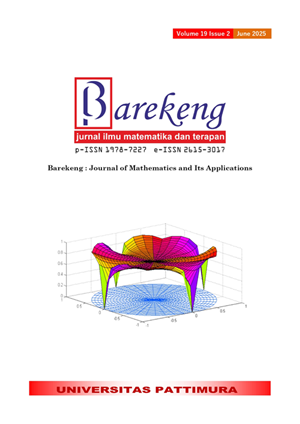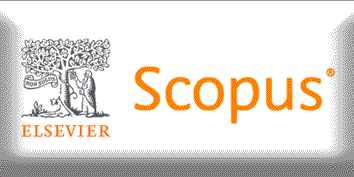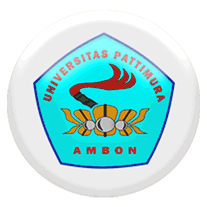DETERMINANTS OF INDONESIA’S CINNAMON EXPORT VOLUME TO THE UNITED STATES: AN ERROR CORRECTION MODEL APPROACH
Abstract
Cinnamon is one of Indonesia's leading export spice commodities. The United States (US) is the strongest importer country of Indonesian cinnamon. However, since 2013 the volume of Indonesian cinnamon exports to the US has decreased. If this decline continues, it could shift Indonesia's position in the cinnamon export market. This research aims to provide an overview of and analyze the influence of export prices, GDP, production, and exchange rate on Indonesia’s cinnamon exports to the US from 1990 to 2022. The data used are from the Food and Agriculture Organization (FAO), World Bank, and Organization for Economic Co-operation and Development (OECD). This research uses descriptive analysis with graphical analysis and inference analysis with the Error Correction Model (ECM). The results showed that in the long term, decreasing export prices can increase demand for cinnamon exports from the US. In the short term, large production that does not meet the quality standards can reduce cinnamon exports. The increase in US people's income and the strengthening of Rupiah can increase the volume of Indonesian cinnamon exports to the US in both the long and short term.
Downloads
References
Badan Pusat Statistik, “PDB SERI 2010 (MILYAR RUPIAH),” 2022. bps.go.id.
Kementerian Pertanian Republik Indonesia, “ANALISIS PDB SEKTOR PERTANIAN TAHUN 2022,” pp. 1–53, 2022.
Dahiri, “ANALYSIS OF THE ADDED VALUE OF LEADING COMMODITIES OF THE PLANTATION SUBSECTOR,” J. Budg., vol. 7, no. 1, pp. 114–133, 2022.
H. Anggrasari and W. A. Saputro, “COMPARATIVE ADVANTAGE OF INDONESIA WITH COMPETITIVE COUNTRIES FOR EXPORTING OF WORLD SPICES,” J. ASEAN Dyn. Beyond, vol. 2, no. 1, pp. 48–64, 2022, doi: 10.20961/aseandynamics.v2i1.52181.
I. Hermawan, “THE COMPETITIVENESS LEVEL OF INDONESIAN SPICES IN ASEAN MARKET BEFORE AND AFTER GLOBAL ECONOMIC CRISIS,” Bul. Ilm. Litbang Perdagang., vol. 9, no. 2, pp. 153–178, 2015, [Online]. Available: http://jurnal.kemendag.go.id/bilp/article/view/6.
FAO, “FOOD AND AGRICULTURE ORGANIZATION OF THE UNITED NATIONS,” 2023. https://www.fao.org/faostat/en.
N. G. Mankiw, PENGANTAR TEORI EKONOMI MAKRO, Edisi Keti. Jakarta, 2006.
Indelman, F. Andrianus, and N. Kamarni, “FAKTOR PENENTU EKSPOR KOMODITI KAYU MANIS INDONESIA,” Ekon. J. Ilmu Ekon. dan Stud. Pembang., vol. 22, no. 1, pp. 1–16, 2022.
K. R. Rambe and L. R. E. Malau, “THE COMPETITIVENESS LEVEL AND FACTORS AFFECTING INDONESIAN CINNAMON TRADE FLOW,” Agromix, vol. 14, no. 1, pp. 28–38, 2023.
D. N. Gujarati and D. C. Porter, BASIC ECONOMETRICS. New York: McGraw-Hill, 2009.
Y. N. Asrini, S. Hodijah, and Nurhayani, “ANALISIS EKSPOR KAYU MANIS INDONESIA KE AMERIKA SERIKAT,” E-Journal Perdagang. Ind. dan Monet., vol. 9, no. 2, pp. 107–120, 2021, doi: 10.53867/jea.v1i1.5.
N. C. P. Tanjung, B. C. H. Simangunsong, and E. G. T. Manurung, “EXPORT DEMAND OF NON-TIMBER FOREST PRODUCTS: A CASE STUDY OF CINNAMON PRODUCTS IN INDONESIA,” J. Sylva Lestari, vol. 12, no. 1, pp. 181–190, 2024.
R. S. Pindyck and D. L. Rubinfeld, MICROECONOMICS EIGHT EDITION. PEARSON, 2013.
I. U. Putri, S. U. Sentosa, and E. Syofyan, “ANALYSIS OF FACTORS AFFECTING INDONESIA’S CINNAMON EXPORTS TO THE UNITED STATES,” Adv. Econ. Bus. Manag. Res., vol. 124, pp. 384–390, 2020, doi: 10.2991/aebmr.k.200305.094.
D. Rochdiani and E. Wulandari, “COMPETITIVENESS ANALYSIS AND FACTORS AFFECTING INDONESIAN CINNAMON EXPORTS,” Economies, vol. 11, no. 2, 2023, doi: 10.3390/economies11020055.
L. Izhar and J. Hendri, “POSTHARVEST STANDARD PRACTICES FOR IMPROVING CINNAMON QUALITY PRODUCT IN KERINCI,” IOP Conf. Ser. Earth Environ. Sci., vol. 1024, 2022, doi: 10.1088/1755-1315/1024/1/012078.
F. G. Santeramo and E. Lamonaca, “THE EFFECTS OF NON-TARIFF MEASURES ON AGRI-FOOD TRADE: A REVIEW AND META-ANALYSIS OF EMPIRICAL EVIDENCE,” J. Agric. Econ., vol. 70, no. 3, pp. 1–45, 2019, doi: 10.2139/ssrn.3285107.
L. R. E. Malau, R. Anjani, N. A. Ulya, and E. Martin, “COMPETITIVENESS AND DETERMINANTS OF INDONESIAN PLYWOOD EXPORT,” J. Sylva Lestari, vol. 10, no. 2, pp. 278–293, 2022, doi: 10.23960/jsl.v10i2.580.
Z. Syam, V. Silvia, and T. C. Dawood, “DETERMINANTS OF INDONESIA FROZEN YELLOWFIN TUNA EXPORTS TO MAIN DESTINATION COUNTRIES,” Tech. Soc. Sci. J., vol. 21, no. July, 2021.
Riyani, Darsono, and M. Ferichani, “ANALYSIS OF EXPORT DEMAND FOR INDONESIAN AGRICULTURAL COMMODITIES BY THE CHINESE MARKET,” Agrar. J. Agribus. Rural Dev. Res., vol. 4, no. 2, 2018, doi: 10.18196/agr.4267.
Copyright (c) 2025 Elga Winner Mombun Siahaan, Lia Yuliana

This work is licensed under a Creative Commons Attribution-ShareAlike 4.0 International License.
Authors who publish with this Journal agree to the following terms:
- Author retain copyright and grant the journal right of first publication with the work simultaneously licensed under a creative commons attribution license that allow others to share the work within an acknowledgement of the work’s authorship and initial publication of this journal.
- Authors are able to enter into separate, additional contractual arrangement for the non-exclusive distribution of the journal’s published version of the work (e.g. acknowledgement of its initial publication in this journal).
- Authors are permitted and encouraged to post their work online (e.g. in institutional repositories or on their websites) prior to and during the submission process, as it can lead to productive exchanges, as well as earlier and greater citation of published works.






1.gif)



